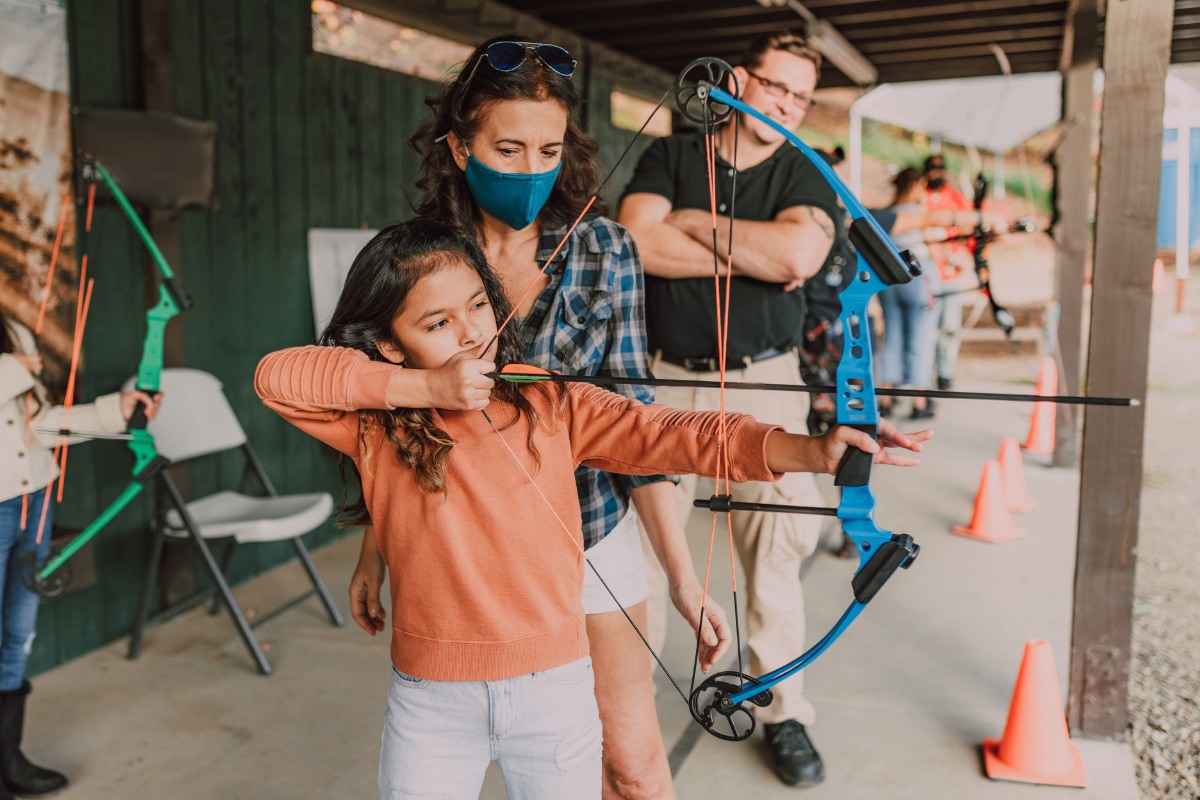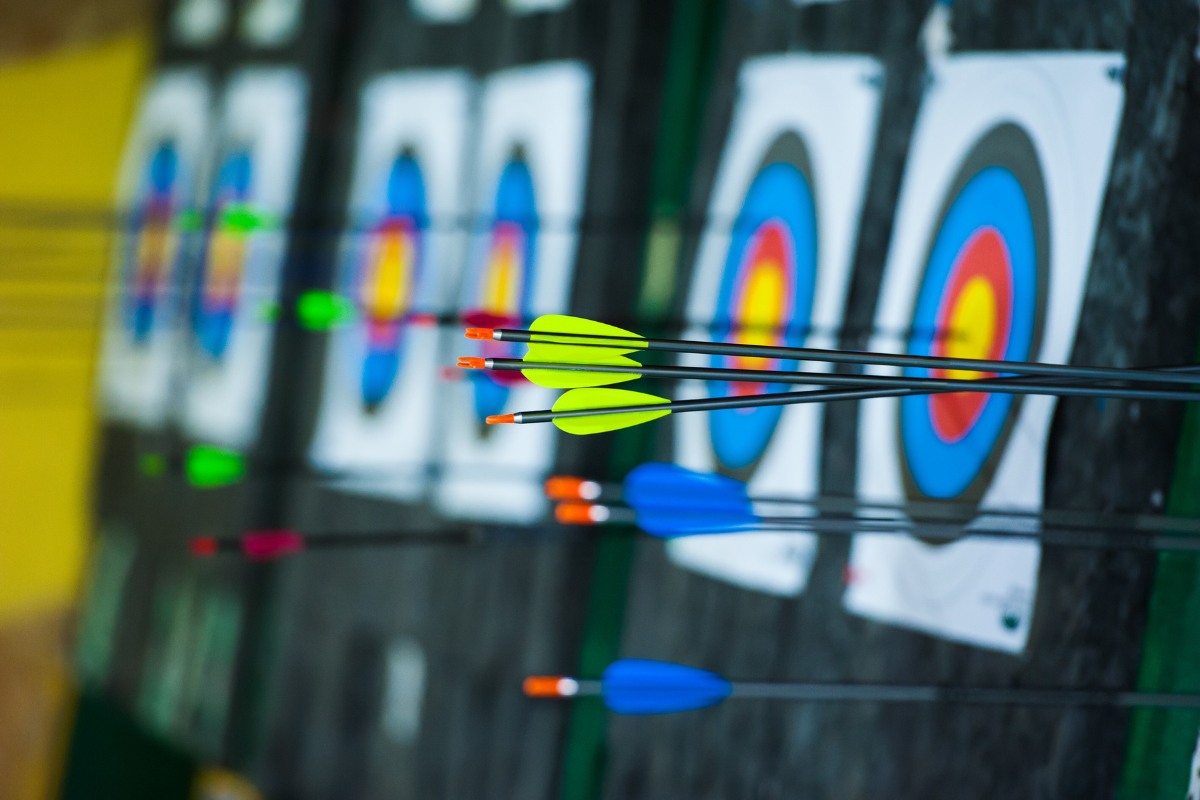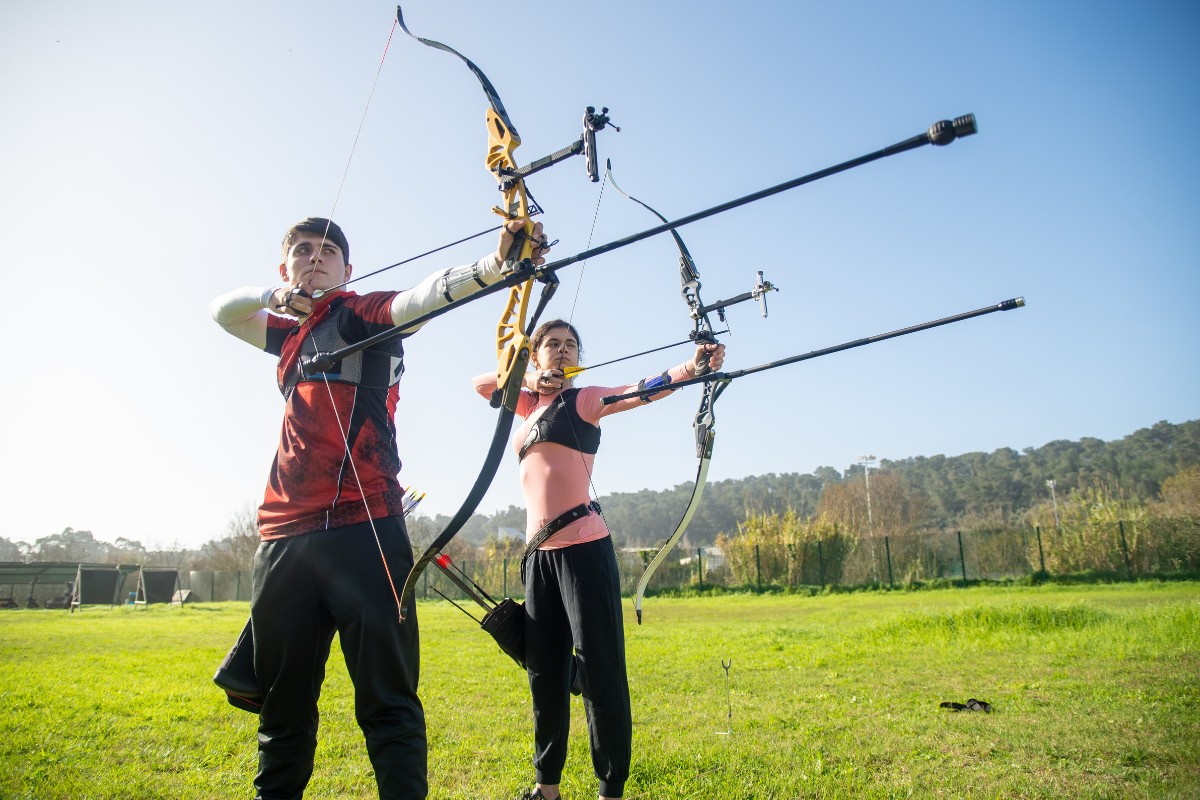Archery is a sport for almost anybody to try out. The gear and equipment costs won’t break the bank, but many people want to have some idea about how much time to invest before they can truly master the sport.
So, how long does it take to learn archery?
An hour to learn, and a lifetime to master. Getting started with the basics and learning all the technicalities of drawing, aiming, and shooting is simple and effortless and can take 1-2 hours. However, sharpening your skills and training your muscles to do the exact same thing over and over takes a lot of practice, especially for the longer ranges. If you spend 10 hours a week practicing, you can master 70m targets in less than 6 months.
There are people who take one or two years to master the art, while others take up to ten years. But not everyone wants to take that long, and you don’t have to. There are ways to significantly reduce your learning time as detailed below.
Join an Archery Club
An archery club is the best way to start if you don’t know any experienced archer to tutor you. You could decide to do it yourself and learn on your own, but the chances of error are too high, especially if you have no prior experience.
There are lots of archery clubs, and each offers different learning packages, so it shouldn’t be difficult to find one that works for you. Some even have temporary membership for those who don’t know how invested they want to be. If you are in school or college, the school’s archery programs are a great way to start.
Why should I join an archery club?
Camaraderie
It is only by joining archery clubs that you can meet like-minded individuals who share your passion for learning. Some clubs admit new members in intervals, so you will have lots of people to start your learning experience with. Each person has his or her mistakes, failures, tips, and tricks that you can learn from.
They also offer social settings where archers come together to discuss shooting techniques, gear, and shooting experiences, among others. What better way to learn?
Scheduled Practice
There are a lot of benefits to a scheduled practice. First, you won’t be alone at the range; there are lots of activities going on around you, so as you shoot, you also learn to shut out all the distractions around you for the perfect shot. Second, since archery is all about consistency, you will be training your mind and body to function on a schedule, which is the first step to mastering the art.
You can also study your fellow learners to see what they are doing right or wrong to better your shooting.
Trends and Technology
Technology is always changing. One minute you have the latest bow sight, and the next it’s already outdated. It is only by joining a club that you can keep up.
Large clubs have the latest in technology and innovations to aid in the learning process. If you decide to do it on your own or hire a single tutor, you will most likely be stuck with a single bow and sight. It may not even be recommendable for beginners. Archery clubs have the proper equipment for beginners, competent archers, and great archers. That said, you will master the art faster if your equipment matches your skill at all levels.
Expertise
The trainers at archery clubs, more often than not, have had lots of experience dealing with beginners. They know how to deal with almost everything you throw their way, from correcting a proper stance to the correct draw length and weight for your skill level. First-hand advice from these trainers will push you up the learning curve faster.
Off-Season Activities
Learning on your own or under a tutor has off-season limitations. Many archers don’t shoot during winter, and when the season ends, they are a little rusty. Some archery clubs offer year-round shooting and move the exercise indoors during winter. That way, you will take advantage of every day of the year for faster results.
Competitions
The best part about clubs is their competitions. Time and again, clubs hold competitions amongst their members or against other clubs for a prize. If you want to take part, this will make you work harder and hone your skills faster than you would have had you not been expecting anything.
Most, if not all, of these clubs will require you to pay a monthly or annual fee for membership. In the long run, you realize you are actually getting more than you paid for.
Learn to Teach Archery to Yourself
If you don’t have the option to join a club or your time is very irregular, you may have to opt to teach yourself. It is probably going to be slower, but there are many ways to teach yourself archery fast.
How to learn archery faster on your own?
Some people like to learn stuff on their own. It is much less pressuring and challenging, which equals fun. But is it possible to learn on your own? What are the challenges? How long does it take to learn archery on your own?
Learning or mastering archery on your own is possible, but it will take longer than under an instructor.
There are a few key actions you can take to learn fast on your own:
Read, Read, Read
There are so many good books on archery from instructors to Olympic champions. They know all the mistakes beginners make, and they can speed you to master faster.
Find Somewhere Local and Convenient to Practice
You can either build your own range if you have the space, or you can find a good range locally. Be consistent and practice as much as you can per week.
Watch YouTube Videos
Form is everything, so you have to watch and mimic others who are better than you. YouTube is great for this, and there are a number of great channels out there to use.
Participate in Online Communities
If you are plateauing or finding yourself demotivated, then interact online with your fellow archers. Reddit is a great solution, and the Archery subreddit has more than 250,000 members and is updated daily.
Film Yourself
To know whether your form is correct, try recording yourself as you shoot. This technique is used by many athletes to analyze their performance from a different point of view to see if there is anything they could have done better. Even if you have someone around as you practice, it is important to record and watch later as they may have missed something.
The Forms of Archery to Improve Your Skills
The time you take to master archery depends on the type you choose to engage in. There are various types depending on your area, and each requires a different technique, equipment, and duration to fully master. At a glance, here are the most common types:
Target Archery
This is the most common form of basic archery for beginners and takes the shortest time to learn. It consists of a bow, arrow, and a target of concentric circles with a bull’s eye in the middle. The targets vary in sizes and distance. Any archer can participate regardless of their skill level.
Field Archery
This is the outdoor version of the above. It is practiced through woodlands and uneven terrains. Targets are set up at different elevations and distances, so archers practice shooting uphill or downhill in different lighting conditions and wind. Mastering the different conditions is challenging, so it takes longer than target archery.
Bow Hunting or Bow Fishing
Bow hunting is a good survival skill. It comprises shooting animals such as deer and fish for consumption. As it involves moving targets, it takes much longer than the two above.
Related Questions
How Many Arrows Should I Shoot a Day
The number of arrows to shoot in a single day or session depends on a number of factors. As such, the answer to this question will vary depending on who you ask. Some articles on the web even suggest up to 5000 arrows weekly, which, if you do the math, is unrealistic. Most archers recommend an average of 100 arrows a day, six days a week.
However, it is more about the quality than the quantity. Unless you are an expert, the more arrows you shoot, the less the accuracy and the poorer your form.
The quality of your shots is more important than the quantity, so the moment you feel your form getting weaker, close up shop for the day or at least for the session.
Instead of blowing through all your arrows trying to hit the 100 arrows per day target, there is a way to perfect your form without actually shooting. You will need your bow, a stretch band, and a mirror. There are two ways of doing this. The first is to stand directly in front of the mirror as if you are shooting at it and draw your stretch band.
From this angle, you can monitor everything about your stance and form. You can identify issues such as head angle, posture, and shoulder alignment, among others.
The second position is to stand as if the mirror is another archer shooting beside you. In this position, you can identify and correct issues with your width, hip position, shoulder, and elbow height.
Shoot as many arrows as you can until you feel you have a consistent form, then you can take your skills to the range and hit the 100 quality shots a day mark. The best part about this method is you can “shoot arrows” anywhere, be it a hotel room or inside your house.
Is It Challenging to Learn Archery
To learn archery? No. To become a master at it? That is a whole different story. A couple of hours a day for a week or so is enough to get you started. However, if you want to take your skill up to the competition’s level, then be ready for some challenge.
The challenge isn’t its physicality, as it is not very demanding, but the need to do it consistently. The more you do it, the more nerve-wracking it becomes. Only your dedication and need to perfect will overcome this challenge.
As you get better, you also need to upgrade your tools, so there are some financial challenges as well. There are also additional tools and add-ons that may cost you.
Generally, it is not challenging to learn archery. The repetitive nock, draw, aim, release movements aren’t too tiring. The greatest challenge is the commitment to doing what is required over and over.
Final Thoughts
It won’t take you long to learn archery. But to master it, that’s entirely different. You only need to put in two or three hours a day for a week to learn all the basics and properly shoot a bow, but to reach Olympic-distance skills, be prepared to put in at least a year’s practice.








